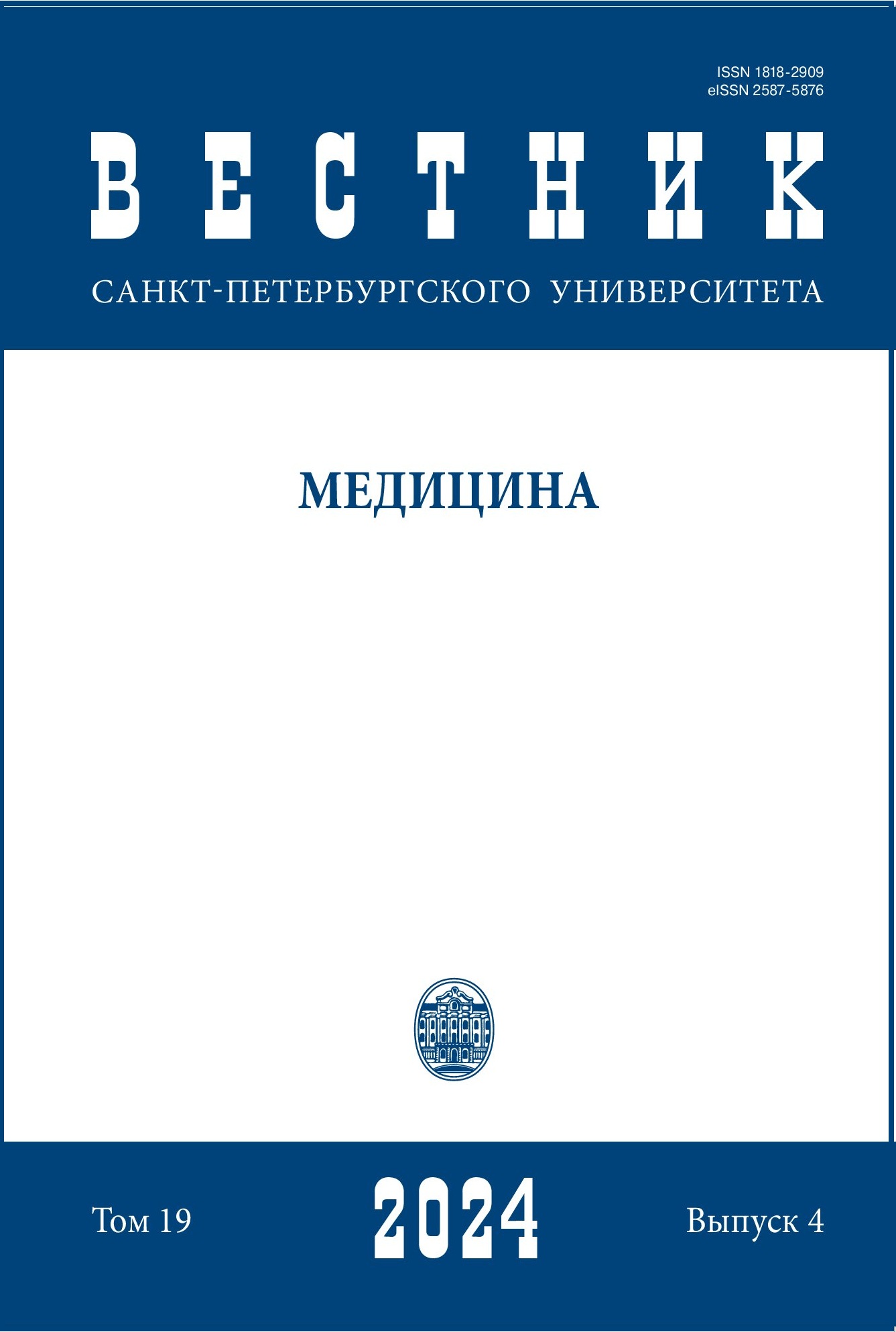Analysis of the effectiveness of combined treatment approaches for patients with cholecystocholedocholithiasis
DOI:
https://doi.org/10.21638/spbu11.2024.404Abstract
Most common one-stage surgical methods for the treatment of cholecystocholedocholithiasis include laparoscopic cholecystectomy with endoscopic retrograde cholangiopancreatography, endoscopic papillosphincterotomy and lithoextraction or with laparoscopic common bile duct exploration. From September 2013 to October 2023, at our center, 481 patients were treated for cholecystocholedocholithiasis and its complications, of which 114 patients received one-stage
combined treatment. The primary group consisted of 26 patients who had laparoscopic chole-cystectomy combined with laparoscopic common bile duct exploration, while 88 patients underwent laparoscopic cholecystectomy with endoscopic retrograde cholangiopancreatography,
endoscopic sphincterotomy and lithoextraction, with 57 of these forming the control group. The follow-up period extended up to five years, including telephonic consultations. The groups were analyzed for stone extraction effectiveness, duration of surgery, postoperative hospital stay, total hospital stay, and rates of somatic and surgical complications. Patients receiving laparoscopic cholecystectomy paired with laparoscopic choledocholithotomy experienced a significantly shorter hospital stay (p = 0,044), with no notable differences in postoperative complications observed. Both combined surgical approaches proved to be effective and safe in treating cholecystocholedocholithiasis.
Keywords:
cholecystocholedocholithiasis, laparoscopic cholecystectomy, laparoscopic choledocholithotomy, endoscopic papilosphincterotomy, endoscopic retrograde cholangiopancreatography, laparoscopic common bile duct exploration, combined surgery
Downloads
References
References
Downloads
Published
How to Cite
Issue
Section
License
Articles of "Vestnik of Saint Petersburg University. Medicine" are open access distributed under the terms of the License Agreement with Saint Petersburg State University, which permits to the authors unrestricted distribution and self-archiving free of charge.




